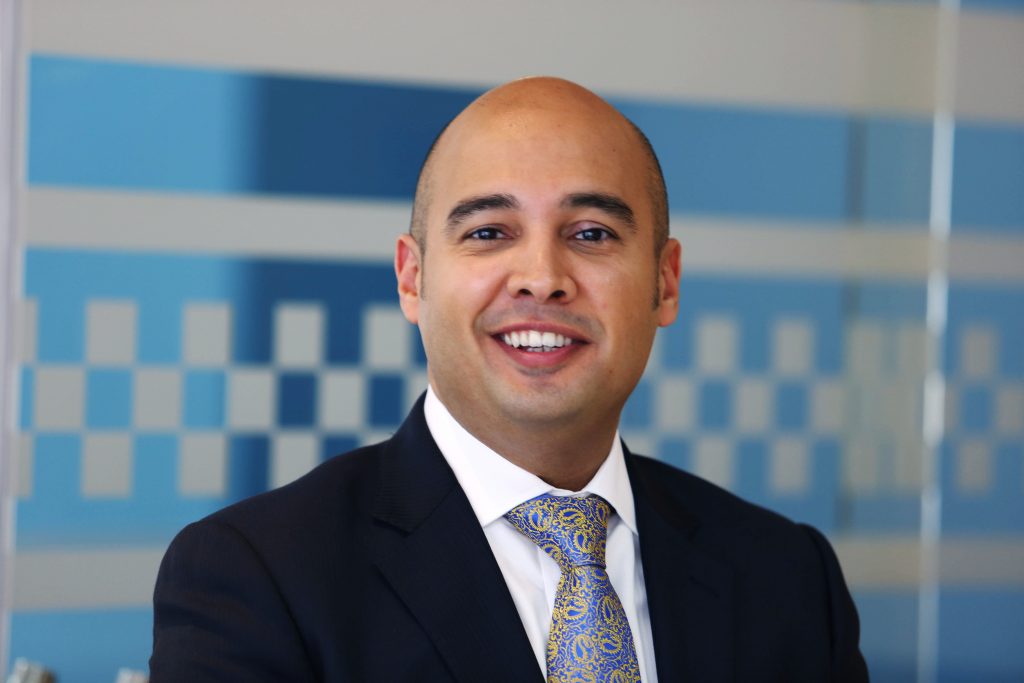Property markets across the Gulf are still reeling from the lingering impact of the oil price collapse that took place in 2014. Many governments in the Gulf region have had to reconsider their economic profiles and long standing policy of offering a tax-free business environment. The six member states of the Gulf Cooperation Council (GCC), including Saudi Arabia, the United Arab Emirates, Bahrain, Oman, Kuwait and Qatar, have all seen a stagnation, or correction in values and rents across their residential and commercial property markets for almost two years now.

While oil prices have demonstrated somewhat of a recovery over the last six months, many of the regions governments still struggle from a heavy reliance on oil revenues to fund state spending, economic growth profiles have been trimmed and a record number of infrastructure projects have been shelved, or stalled. In fact, MEED, which tracks total real estate and infrastructure projects and completions across the GCC reported 2016 as registering a $61bn delta between completed and awarded projects, the weakest performance of the index since its inception 12 years ago.
As many of the GCC states still retain a high reliance on hydrocarbon revenues to fund infrastructure spending, the governments have collectively announced plans to roll out a 5% value-added tax (VAT), commencing on January 1, 2018. Its still unclear at this stage how the property market will be impacted by the new tax, but it goes without saying that it will be a game changer for the region that has prided itself on its tax-free status historically.
Still, despite the anaemic economic conditions, some markets and sectors have demonstrated a great degree of resilience in the face of what are arguably the most challenging conditions since the Great Recession of 2008.
Dubai, UAE
Despite buoyant domestic economic conditions, Dubai has seen a slight to moderate contraction in rents and values across its residential and commercial markets largely because of flagging global economic growth. This is of course in part linked to the emirates staging of the looming 2020 World Expo, which is driving a flurry of investment activity and job creation. This is expected to gain momentum as we head towards the six-month mega event that is expected to draw in over 25 million international visitors. During January alone, $3bn worth of Expo-linked infrastructure and construction projects were awarded, highlighting the importance of the event that is expected to add 300,000 new jobs to the citys economy over the next four years. Clearly such a growth surge will have positive ramifications for demand in both the residential and commercial markets across the city.
For now, the citys residential market ended 2016 with values down roughly 25% on the last market peak of Q3 2008. We still expect values to stabilise towards the end of 2017 and key triggers to slow the decline are likely to continue emerging in the form of infrastructure projects linked to the World Expo in 2020 and other mega projects. These include city-altering projects like the Dubai Canal, Blue Waters Island, Emaars 3,000 foot plus The Tower and the expansion of what is set to be the worlds largest airport, Al Maktoum International Airport. These will all help to sustain, or lift, public sentiment, which has proved instrumental in keeping the emirates economic growth profile the most positive in the region. The change in US leadership may well bring some surprises as well, but this is something we are monitoring closely. For now, decisions taken in the White House look set to boost the emirates profile amongst regional investors should they feel alienated by new US regulations, or nervous about the health of the global economy.
Despite some submarkets in Dubai heading towards bottoming out, transaction volumes are still weak and reflect the general nervousness around commitments to purchase, while the wider issue of affordability remains a stubborn thorn in the markets side. Quarterly transaction volumes slipped by 21% during Q3 2016, led by a 22% fall in apartment deal volumes, which were down 26% when compared to Q3 in 2015. The average price of a transacted villa has also fallen by 28.1% between Jan-Sep 2016 to stand at $1.1mn (AED 3.9mn).
Away from the residential market, the office market has been punctuated by high levels of consolidation activity, particularly last year, most notably from the oil and gas sector, but also existing occupiers looking at efficiencies through single-hub operations. A great deal of that activity has all but subsided.
The rising star in the office occupier market is certainly the Technology Media Telecommunications (TMT) sector. Internet City and Media City remain the core focus of this rapidly expanding and ever important sector for Dubais economy. The governments recent Future-Accelerators Programme is paving the way for further strong expansion in this area over the short term and has even attracted the likes of LA-based Hyperloop-One. However, with limited amount of space available in high demand locations, interest is likely to rise in complimentary free-zones such as Dubai Science Park. New and existing TMT occupiers have been active in the market recently, such as Samsung which has recently trebled its floor space and Amazon Web Services which has announced plans to establish a new Middle East office in the emirate as it works to grow its presence in the region.
Looking ahead, The Avenue, Dubai International Financial Centres (DIFC) retail parade, is expected to spur overall activity and take up across the citys critical financial nerve centre. The Avenue is expected to bring increased connectivity as the DIFC matures into a more pedestrian friendly environment. For now, core buildings command very low vacancy rates of sub 5% and we expect this to persist. The shortage of space in this part of DIFC is hampering activity, however we have recorded a few small relocation deals within the finance and banking sector of under 3,000 sq ft. No supply relief is expected until early 2019, when the $1bn ICD Brookfield Place is expected to complete. The development will provide 900,000 sq ft of Grade A space. Nearby, One Central may offer further significant Grade A space when two more buildings in phase 2 complete later this year.
Despite the somewhat flat conditions, Dubais office market has been the most resilient in the region, which stems from its appeal amongst international occupiers and the strong belief in the domestic economys ability to shake off any fringe impacts of an uncertain global outlook. This is reflected in the fact that occupiers such as Huawei and MasterCard are pressing ahead with purpose built schemes in sought after office hotspots such as Dubai Internet City.
Abu Dhabi, UAE
In the Emirati capital, Abu Dhabi, the impact of the oil price collapse is far more acute, with a notable acceleration in the residential markets correction. This is because of global economic uncertainty and more importantly, the protracted oil and gas sector’s decline, which represents nearly 50% of the emirates GDP. This, combined with continued market softening across residential and office markets has led to nervousness amongst investors, with many reluctant to commit to purchases until they see signs of stabilisation.
After holding steady for over a year, prime (AED 1,900 psm) and secondary (AED 1,100 psm) office rents in Abu Dhabi slipped by 5% and 8.3% respectively during Q3 of 2016. Receding demand and a growing amount of secondary space on the market has undermined rents. In fact, rates in some of Abu Dhabis prime office buildings have also buckled under the markets weakness, with asking rents declining by up to 20% in some Grade A buildings.
Bahrain
Away from the United Arab Emirates, Bahrains property markets are also showing signs of stabilising after several years of challenging economic conditions that were exacerbated by an unprecedented period of national tensions. Households in Bahrain have been faced with some very challenging headwinds over the past 12-18 months, with national subsidy removals on fuel and some food items. Furthermore, job security fears are denting confidence and driving down budgets. That said, the relative resilience of rental budgets in the residential market when compared to conditions in 2008/09 continue to outperform expectations. Still, economic fragility and the ongoing impact of the low oil price environment have curtailed job creation levels and dampened overall sentiment and this will continue to hamper the Kingdoms property market.
In the office market, the stability borders on stagnation with almost no change in rents across the board last year. The limited activity continues to be largely driven by internal relocations, although renewed stability across the Kingdom has also helped the market settle. Landlords however, remain reluctant to adjust rent downwards as they are already at levels not seen in over four years. We have already seen concessions made on lease terms and expect this trend to intensify. There has been a concerted move to offer greater flexibility around lease terms, whilst also offering smaller amounts of office space.
Oman
Across in Oman, the local residential and office markets are feeling the burden of economic challenges, however the capital, Muscat, remains a highly attractive tourist destination within the Gulf and investors have taken note. Expansion in the hospitality sector is set to be a beacon of growth in 2017 for the Sultanate. Significant growth in the Omani tourism sector is feeding a period of exponential development in the four and five-star hotel market. In fact, over the next two years, hotels currently under construction will deliver a 50% increase in room supply to the premium segment of the market.
The significant increase in supply we are anticipating will result in a more competitive market from a hotel operator perspective but will also provide a greater choice for customers. We expect this will help to drive the continued growth in the tourism and hospitality sector, with other operators drawn in by the allure of a rapidly emerging market.
Although we see significant opportunities within the hospitality sector, the outlook is less positive for the residential and office markets with several factors impacting performance. The volatility caused by low oil prices has had a knock-on effect on the number of professionals working in the Sultanate; but redundancies have now spread well beyond the oil sector. This in turn has heavily impacted the demand for real estate.
The prospects for an immediate turn around in the residential market remain unlikely, and given the countrys heavy reliance on the oil and gas sector, outlook for the residential market remains weak. More positively, the government is clearly working hard behind the scenes to drive more efficient spending, while at the same time undertaking sentiment boosting mega projects such as the recent tendering for the first phase of Oman Rail and the progression of works related to the $1.3bn redevelopment of Mina Sultan Qaboos. Projects such as these bode well for future demand for residential property, but for now, the outlook remains subdued.

